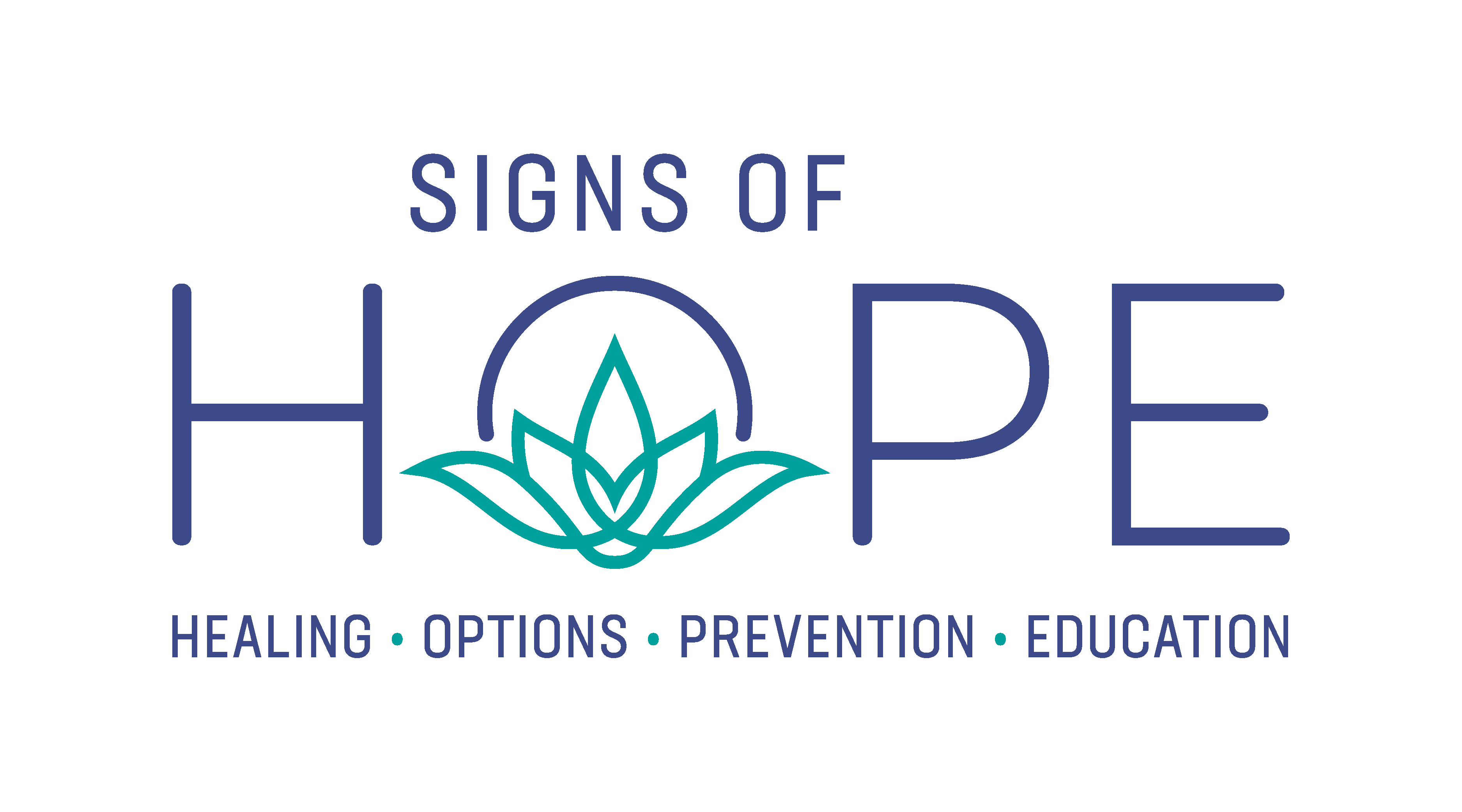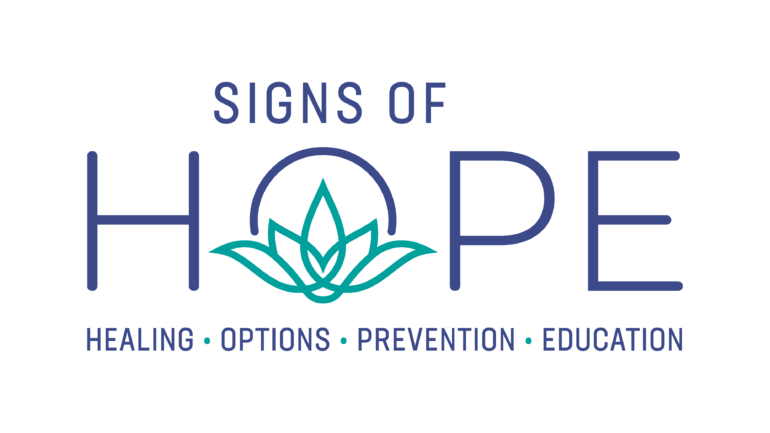There’s no doubt that technology is a double-edged sword. It can be a convenient and effective tool for expanding access to services. But unless digital systems are applied thoughtfully, interacting with them can quickly become frustrating and dehumanizing.
Signs of Hope turned to technology during the pandemic to provide the community with a way to use our services while protecting everyone’s physical safety. The result is that our services became more accessible than they ever had been before for people who encountered barriers to visiting our center in person. Those with disabilities, limited transportation options, or living in more rural settings could attend a telehealth counseling appointment or online support group with greater ease than traveling to the center, provided they had the necessary internet access. Now, we’re working to take advantage of all the best aspects of this technology while preserving the most essential quality of our services: human connection.
We recently implemented a new electronic medical records system at the Signs of Hope Counseling Center. This includes a confidential sign-in process on an iPad. This reduces physical contact, and therefore the risk of covid transmission, but it also protects clients privacy in a new way. With this system in place, clients can come in for counseling without having to say their name aloud in the public setting of our lobby. While this may seem small, that additional layer of privacy can make a big difference for someone who has struggled with asking for help, or is worried about controlling who finds out about their experience. But this type of automation can also feel impersonal, so its use is limited. Clients still speak directly to a member of staff when they call Signs of Hope, without having to dial through an automated phone system. And, of course, when checking in at the counseling center, clients then spend a full session with their therapist in person.
Signs of Hope is also exploring how we can use tools like video and animation to reach people, especially younger audiences, online. People are now more likely to watch a video than to read written content – the equivalent of listening to a lecture or presentation rather than reading an article. This shift makes a lot of sense. As our lives become more heavily digitized and we have fewer opportunities for in-person interaction, seeing a person’s face and hearing their voice feels much more personal, engaging, and emotionally accessible than reading the same information in plain text.
Animation in particular could be an effective educational tool for us because of its ability to convey difficult topics. Shows like Tuca and Bertie demonstrate how animation can provide a kind of buffer or distance between the viewer and heavy topics that allows for safer engagement with those topics. In the season 1 finale of Tuca and Bertie, an animated show about two best friends who are also anthropomorphic birds, Bertie shares her story of experiencing childhood sexual abuse. The contrast of the bright and goofy art style of the show against the seriousness of Bertie’s trauma provides the audience with a measure of distance and relief as they take in her story. Another possible advantage of animation is that it can allow a survivor to share their story and be visible while still retaining a measure of privacy and safety.
Speaking of sharing personal stories, social media has given the average person a public platform, and there are countless people sharing their stories and personal experiences. This means that people are now much more likely to hear from someone they can identify with and connect to an issue on a more personal level. Signs of Hope is exploring how we can tap into this phenomenon to keep our resources relevant and effective at meeting people wherever they are.
Ultimately, what makes our work effective is human connection. Human connection is what brings communities together to protect each other from violence. Human connection is what creates the space for a survivor to heal. As we explore and use these new tools to better reach our community, we do so knowing that the technology has to serve those human connections, not get in their way.


